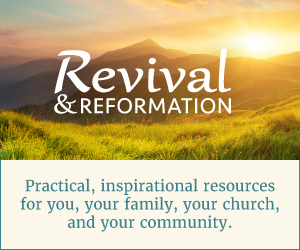Operating as we do in hitherto unworked territory that is largely Catholic, we advertise our meetings under the name of "Bible Chautauqua." There have been many Holiness revivals and evangelistic campaigns in this community. So, in order to appeal to the better classes, we avoid the use of such terms as would surely be misunderstood.
An empty store building was used to good advantage in our effort now closing. This was the most centrally located site in the city. Window cards advertizing the meetings were placed in all the stores, and also in the homes of those attending the first meeting who were willing to display them. After the first week we did no house-to-house advertizing with handbills, etc., because of financial limitations; also because experience has led us to believe that the newspaper advertizing and that gained through enthusiastic attendants is more effective.
We endeavor to make a judicious use of song slides, illustrated special solos, etc., and we use the stereopticon in illustrating the lecture in much the same way as one would illustrate a book. The wiring is so arranged that the stereopticon operator can turn off the audi torium lights, at the same time automatically switching on the machine. A push button on the pulpit operates a silent signal light at the operator's stand. Thus, without an instant's delay, the lights may be turned off and a beautiful picture appears on the screen. With a dissolving Balopticon, the scene changes silently at the signal, with nothing to distract from the speaker's message.
From the opening piano solo to the closing benediction, there should be no hitch in the program. In our effort the song service merges into the lecture period in the following manner: The speaker enters from the prayer room during the last verse of the song service, and kneels in prayer. As soon as the song is finished, at a signal from the song leader, the audience stands and sings our campaign prayer chorus:
"Into my heart, into my heart, Come into my heart, Lord Jesus ; Come in today, come in to stay, Come into my heart, Lord Jesus."
Then with the audience still standing, the opening prayer is offered.
After the prayer are brief announcements concerning future subjects for the week. At this time requests for copies of Present Truth are made in writing upon our literature cards, and the literature is delivered the next night by the ushers as the names are read during the song service. This list of names is valuable in working personally for converts, and it provides a satisfactory method of determining those who return each night.
The offering follows, and when the ushers come forward for the plates, the head usher places the question box upon the rostrum railing. This gives the evangelist a few moments during the reception of the offering to glance over the questions before answering them. We follow the practice of "padding" the box, for the following reasons: (1) It provides questions to answer should there be queries which need study before giving a reply. (2) In visiting the homes, many questions are asked the answers to which will benefit all. (3) It gives encouragement to the audience to ask questions. (4) It inspires confidence in the speaker's knowledge of the Scriptures, and lays a foundation for the testing truths. It is my plan to keep a file of important questions for use in future efforts.
The special music after the ten-minute question period directs the minds of all to the general theme for the evening's discussion. The giving of the message itself occupies from forty to fifty minutes, culminating in an appeal to dedicate the life to God and to forsake the ways of the world. The meeting closes with either congregational singing or a solo, as may seem most appropriate. The song leader prepares for either, and is directed by a silent signal from the speaker as to which he prefers.
Personally I have followed this procedure for three years now, with slight variations and improvements, and the audiences have kept coming even while the testing truths were presented. Generally there is a full house from the first lecture to the last, and seldom is there enough room for all who come. My wife generally leads the singing. We use various song books, and the sale of these helps to finance the effort.
At first we were at a loss to know how to care for the children who came, but finally we worked out the plan of organizing a children's choir at the very beginning of the evangelistic effort. Special after-school meetings are conducted twice a week for the children, at which they learn songs and memorize the Lord's prayer, the ten commandments, certain psalms, the beatitudes, etc. During the evening services the children sing the special songs they have learned and repeat the scriptures memorized. They sit in seats reserved for them, and are graded for attendance, deportment, and memory work. At the close of the effort they are publicly awarded a certificate.
Candidates are seldom baptized until three to four months after their decision to join the Seventh-day Adventist Church. Meantime a baptismal class is formed in which "The Bible Made Plain" is used as a convenient text. Each candidate is given opportunity to read "The Great Controversy," and thus acquaint himself with the Spirit of prophecy. This thorough indoctrination pays. Thus when people are finally baptized, there are no essential points of doctrine that have not been clearly explained. Out of scores who have been brought into the message in this way, I know of only one person who has apostatized, despite the fact that because of financial conditions some of the churches have had little or no ministerial leadership for nearly a year thereafter.














